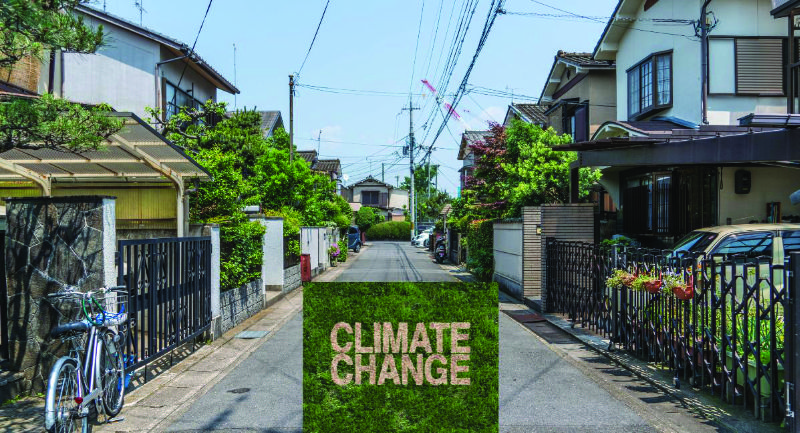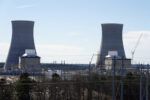EPA’s Greenhouse Gas Reduction Fund – Will It Help Drive Down Energy Costs?
The federal government is launching its largest-ever clean energy investment, focusing on communities that have long been burdened by pollution, high energy costs, and limited access to renewable energy solutions. A significant portion—over 40%—of the $27 billion Greenhouse Gas Reduction Fund (GGRF), a groundbreaking initiative from the Environmental Protection Agency (EPA), is earmarked for these vulnerable communities.
The fund aims to finance projects that reduce greenhouse gas emissions and air pollution while creating sustainable energy solutions, such as installing solar panels, promoting energy-efficient home appliances, and introducing zero-emission vehicles.
In a media briefing on September 13, hosted by Ethnic Media Services, a panel of experts discussed what the GGRF is and how it will impact us in the coming years.
Speakers
![]()
- David Widawsky, Director, Office of the Greenhouse Gas Reduction Fund, US Environmental Protection Agency
- Shalanda H. Baker, University of Michigan’s first vice provost for sustainability and climate action
- Evie Bauman, Director, Community Implementation, Rewiring America, part of the Power Forward Communities Coalition
- Jessie Buendia, Chief Impact Officer, Coalition for Green Capital
- Chrystel Cornelius, President & CEO of the Oweesta Corporation
- Rosemery Jones, De Soto, Georgia resident, project manager for Rewiring America
A Landmark Fund for a Greener Future
The GGRF was established under President Biden in 2022 as part of the Inflation Reduction Act, a comprehensive legislative package that authorized $783 billion in domestic spending, marking the largest energy and climate change investment in U.S. history.
The GGRF is structured around three key seven-year grant programs: the $14 billion National Clean Investment Fund, a lending program designed to accelerate clean energy projects; the $7 billion Solar for All initiative, which focuses on residential solar energy installations; and the $6 billion Clean Communities Investment Accelerator, which empowers community lenders, such as credit unions, to offer financial assistance for green energy initiatives.
In September 2023, 68 grantees were selected to receive the full $27 billion from the fund, with projects already underway. David Widawsky said that these investments are set to transform communities across the nation.
The purpose is not only to reduce energy burden, which can be three times and as much as 10 times higher as a proportion of income in low-income and disadvantaged communities compared to the rest of the country,” said Widawsky. “It improves health, reduces pollutants, and allows sustainable wealth creation for the communities that will host these projects.”
The concept of “energy burden” refers to households spending more than 6% of their income on energy costs. Energy burden often correlates with energy insecurity, which affects one in three Americans, particularly in communities with lower incomes.
“Energy insecurity means making the difficult choice every single month about whether to heat or cool your home or eat” explained Shalanda Baker. “It manifests when people do dangerous things to heat their homes in the winter or keep their homes at unsafe temperatures during the summer. It can lead to things like household fires, even to death.”
Addressing Energy Inequities Across Communities
The GGRF is especially critical in addressing energy inequities that have disproportionately affected low-income households and communities of color. Over 52% of Black households and 47% of Latino households in the U.S. are considered energy insecure. Additionally, many Native American tribes face even more significant challenges. For example, 35% of households in the Hopi tribe and 21% in the Navajo Nation lack access to electricity altogether.
Baker highlighted how systemic energy inequities have left these communities struggling to meet basic energy needs.
“Low income households, especially those of color, are more likely to be in the shadows of this because of health impacts from living near fossil fuel generation, and because the way we structure energy rates in this country is regressive,” she said. “The lower your income, the more you pay to meet a standard energy cost in your utility district.”
Historically, the clean energy transition in the U.S. has not been equitably distributed. White Americans living in majority-White neighborhoods are more likely to have access to renewable energy solutions like solar power than their Black counterparts, even when controlling for similar income levels and homeownership rates. ““This fund is a historic opportunity for people to own their energy assets, to create new jobs through new capital — but we need to make sure communities and businesses are informed,” Baker added.
Real-World Impact: A Community Success Story
A clear example of the transformative potential of the GGRF can be seen in the small town of De Soto, Georgia, a community of just 122 people as of 2022. Evie Bauman spearheaded an electrification project that brought energy-efficient upgrades to 75 households in De Soto.
Rewiring America partnered with the local utility, Georgia Power, to bring energy-saving technologies, tax credits, and rebates to the town’s residents. “This program is a blessing,” Bauman said.
“To raise awareness about the impact it can make, last October, we launched a demonstration projects in communities that are underserved or overlooked by climate action. We provided at least one electrification upgrade at no cost to households most likely to see energy bill savings from it, and we partnered with manufacturers to get donated appliances to reach more homes.”
The stories that emerged from De Soto demonstrate the life-changing potential of clean energy investments. One resident had been living without home air conditioning for years, unable to afford a replacement. Another resident, a widow, had been boiling water for two months because her water heater had broken, and she couldn’t afford to replace it. Both received new heat pump systems, allowing them to cool their homes and access hot water without the financial burden.
Even more poignant was the experience of an elderly woman battling cancer, living in a five-room trailer that was cooled by only two window units. After receiving a new heat pump, she called late at night to say, “I’m freezing,” as she struggled to understand how to use her new thermostat. Bauman and her team worked closely with local contractors, HVAC technicians, and staff to ensure residents could safely operate their new appliances, underscoring the importance of ongoing support alongside financial investments.
Long-Term Benefits for Native Communities
Chrystel Cornelius also emphasized the long-term potential of the GGRF, particularly for rural and Native American communities. Oweesta, the oldest Native Community Development Financial Institution (CDFI) in the U.S., received $156 million from the Solar for All program. Cornelius, a member of the Turtle Mountain Band of Chippewa Indians, highlighted how these funds will be used to install solar energy systems in 20,000 Native American households and to kickstart six community solar projects in partnership with tribal members.
Cornelius stressed that the GGRF’s impact goes far beyond immediate energy savings. “If we can layer these projects with long-term business development, this funding is literally going to change the economic and energy landscape of our communities — especially our rural and minority-focused communities,” she said. CDFIs like Oweesta, which are specifically created to provide capital to underserved areas, are critical to ensuring that these communities benefit from the clean energy transition.
With the GGRF funding, Oweesta serves 574 federally recognized tribes, 60 state-recognized tribes, 30 unrecognized tribes, and Indigenous individuals in Alaska and Hawaii. Cornelius described the initiative as a major step forward in combating climate change while addressing long-standing inequities in energy access and economic development.
A Sustainable Future Through Green Banking
Another key player in the GGRF initiative is the Coalition for Green Capital, which received $5 billion to support green banks. Green banks are specialized financial institutions that use a combination of public and private capital to finance clean energy projects. Jessie Buendia explained that the loans provided by green banks will be recycled, allowing more funds to be invested in future projects.
“This can’t be solved with only public-sector investments,” Buendia said. “Many in these sectors are used to working with hundreds, maybe thousands of dollars. Climate change is a trillion dollar problem, and our federal government is now making a down payment of billions to help communities transition into clean power systems well beyond the grant term.”
The Coalition aims to develop a nationwide network of green banks that will continue to support renewable energy projects well beyond the initial grant term. These institutions will play a pivotal role in helping communities switch to renewable energy sources and move away from reliance on fossil fuels, which have been linked to significant health impacts, particularly in low-income and minority communities.
The Path Ahead
As the largest clean energy investment in U.S. history, the Greenhouse Gas Reduction Fund represents a significant step toward a more equitable and sustainable future. By targeting communities that have been historically marginalized, this initiative seeks to address long-standing energy inequities, create jobs, and foster economic development. As Jessie Buendia said, “This is not a short-term story, it’s a long term story.”
With this unprecedented funding, the U.S. is not only working to combat climate change but also ensuring that the communities most affected by environmental and economic challenges are at the forefront of the clean energy revolution.
Image provided by EMS.


